You may prompt your students to describe the following photos. For more detailed explanation look under Galleries in the Main Menu.
Click on the pictures below to see them in whole.
Learners can try to describe these pictures. For more detailed explanation click here.
German is not well known by its swear words, but more by its philosophical capacity. However, sometimes you need to be inventive in order to awaken students’ attention. Here are some of German swear words:
ohne Scheiß (I am not kidding you / no shit?)
Arschloch (asshole)
Fick dich (fuck you!)
Schlampe! (bitch!)
Scheiße! (shit!)
Das ist mir scheißegal! (I don’t give a shit!)
Du blöde Kuh! (you stupid cow!)
Du Weichei! (you sissy!)
Leck mich! (am Arsch)! (kiss my ass!)
Du kannst mich mal! (bite me!)
Du Hurensohn! (son of a bitch!)
verdammter Scheiß! (bloody hell!)
Verpiss dich! (piss off!)
***
Listen to the song Verpiss dich (Tic Tac Toe)
**
Would you like to read jokes about Chuck Norris in German? German proverbs could also be interesting. Quotes in German can be found here.
The bellow list of German inventions is ideal for German classes. This topic is definitely going to intrigue the students. They will have 101 reason why you are wrong when you claim that Germans invented telephone, computer or beer. However, the students will still be able to improve their vocabulary with these words.
Here is the list of (some) German inventions:
der Teebeutel – teabag (Adolf Rambold, 1929)
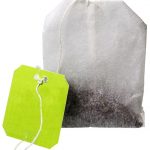
die Glühbirne – light bulb (Heinrich Goebel, 1854)

“Mensch, ärgere dich nicht” (Josef Schmidt, 1907 / 08)
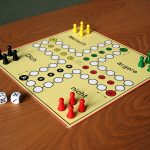
das Telefon (Philipp Reis, 1859)
die Zahnpasta – toothpaste (Ottomar H. von Mayenburg, 1907)

das Fernsehen – television (Manfred von Ardenne, 1930)

die Anti-Baby-Pille (Schering AG, 1961)
das Auto (Karl Benz, Gottlieb Daimler, 1886)
der Computer (Konrad Zuse, 1941)
die Chipkarte (Jürgen Dethloff, Helmut Gröttrup, 1969)
der Kühlschrank ohne FCKW – refrigerator (Firma Foron, 1993)
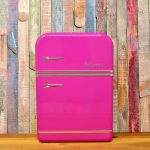
die Currywurst (Herta Heuwer, 1949)

das MP3-Format (Fraunhofer Institut, 1987)
das Bier – beer (Herzog Wilhelm IV, von Bayern, 1516)
der Buchdruck – letterpress (Johannes Gutenberg, 1440)
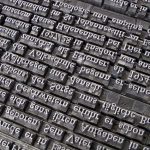
der Hubschrauber – helicopter (Heinrich Focke, 1936)
die Jeans (Lewi Strauss, 1873)
der Motorrad – motorcycle (Gottlieb Daimler, 1885)
der Plattenspieler – record player (Emil Berliner, 1887)

die Straßenbahn – tramway (Werner von Siemens, 1881)

die Thermosflasche (Reinhold Burger, 1903)
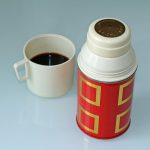
der Dieselmotor (Rudolf Diesel, 1890)
der Gummibär (Hans Riegel, 1922)

Source: Tatsachen über Deutschland (Societäts-Verlag, Frankfurt am Main, in Zusammenarbeit mit dem Auswärtigen Amt, Berlin)
For TEACHERS: If you have no idea how you could go through this topic with your students, click here: CREATE YOUR OWN EXERCISES.
There is a PDF file with detailed information in German provided by Partner fur Innovation and it can be downloaded here. A shorter version of this document can be found here.
When I was looking for the above document in the Internet, I stumbled upon a card game that can be useful here. The cards can be downloaded here.
There is also a quiz provided by Goethe Institute and you can access it here.
Believe it or not, Germany has 78 Nobel prize winners. Yes, you saw it correctly – 78 Nobel prize winners. 67 of them won the Nobel prize for their contribution on the fields of nature sciences and medicine. The first ‘German’ Nobel prize went to Wilhelm Conrad, 1901. He was a Physician. The next in the row were: Robert Koch, Max Planck, Albert Winstein, Werner Heisenberg and Otto Hahn. The latest German Nobel prize winners are: Christiane Nüsslein-Volhard (medicine), Horst L. Störmer, Herbert Kroemer, Wolfgang Ketterle, Theodor Hänsch, Peter Grünberg (all of them for physics) and Gerhard Ertl (chemist).
Source: Sociatäts-Verlag, Frankfurt am Main, in Zusammenarbeit mit dem Auswärtigen Amt, Berlin, 2007
Facts about Germany – the portal with up-to-date statistics, facts and information about Germany could also be interesting for you.
Planet Schule – find useful videos to various topics that you can download and use for your classes.
Bitly – shorten long links.
Wix – create your website for free. If you need an example click here.
Alexa – if you want to check the ranking of your blog / web site.
Fotobabble – create talking photos and slideshows. This site is easy to use. All you need to do is to upload a photo, record your voice and share with your audience.
Twitter – see what’s happening right now enables you to find as many example-sentences as you like for any word. All you need to do is to navigate to the above link and enter the word in the box and press the Search button. Test it right now, you’ll be delighted!
Pocket – put anything in “pocket” and view it later. Put articles, videos or pretty much anything into Pocket. Save directly from your browser or from apps like Twitter, Flipboard, Pulse and Zite. If it’s in Pocket, it’s on your phone, tablet or computer. You don’t even need an Internet connection.
Das Bild des Anderen – international e-mail project of Goethe Institute. You can find pen friends for your students here. This is NOT for native speakers from Germany, Austria or Switzerland.
e-twinning – find for your students native learners as pen friends. e-twinning is actually a community for schools in Europe. It offers a platform for staff (teachers, head teachers, librarians, etc.), working in a school in one of the European countries involved, to communicate, collaborate, develop projects, share and, in short, feel and be part of the most exciting learning community in Europe.
Unterrichtsmaterial – False money for playing purposes. If you navigate to this page you will be able to download euro banknotes for playing purposes – for example if you wish to give them to your students so that they can pretend that they are buying things in a supermarket.
Drucke selbst – create and print out certificates for playing purposes. Chose the model that you like most, personalise it and save as a PDF file which you can then print out afterwards and use in classes as a gift for learners who were the best in some exercises or games.
Pinterest – pin your posts. This web page enables you to create boards with the things that you find interesting. It could be very useful in classes if you wish to save some pictures that the students have taken.
Audacity – create your own podcasts. This is a free, open source, cross-platform software for recording and editing sounds. Audacity is available for Windows, Mac, GNU/Linux and other operating systems.
Wordle – create beautiful “word clouds”. You can create a beautiful word could with words that you and your students collect and insert into this online application. You don’t need to register. Just make sure that Java is set properly on your device. Wordle can be used during brain storming or at any other point during the class. Word clouds can be printed out or you can save it as a picture on your device.
Mahara – your e-portfolio. This is a fully featured web application to build your electronic portfolio. You can create journals, blogs, upload files, embed third-party (social media) resources from the web and collaborate with other users in groups.
Etherpad – your multi-player editor allows you to edit documents collaboratively in real-time, much like a live multi-player editor that runs in your browser. Write articles, press releases, to-do lists, etc. together with your friends, fellow students or colleagues, all working on the same document at the same time.
Evernote – store anything in one place. Make and manage notes, files and photos. Create flashcards for storing of words, phrases, photos, videos and audio recordings. For example, if your students participated in a photo-rally, their photos can be stored and presented in Evernote.
Answer Garden – ask your students anything and get feedback in no time.
Pixabay – free images and videos. Many free high resolution pictures van be found here. Buy them a coffee in order to support their work.
Padlet – your virtual pin board. Collect and present the work of your students in one place. Furthermore they can post their work by themselves on a shared pin board. Click here to register.
Kidblog – learners write blogs. This is a place for your students where they can write their blogs. Find out how you could integrate blog writing in to your classes.
Blogger – teachers write blogs. This platform enables you to write your own blog. For more information on how to use this page click here. You can even earn money by writing a blog.
Speak with a native speaker – this applies to German or any other foreign language. There are at least 3 platforms for this: Tandem, WeSpeke and ConversationExchange.
Online flashcards – Days of Deutsch provides you generously with numerous photo-flashcards.
Colouring pictures – free for download. This is where you can find numerous already made and ready to be used colouring pictures that can be downloaded. However, if you wish to create your own colouring pictures, click here.
Cliparts – free for download. This is a page with numerous clip arts which you could use for example for creating Dobble cards (playing cards). For more information on creating Dobble cards and other exercises for your students click here.
Author: Jadranka Bokan
For teachers: if you are looking for interesting texts which could be used as stimulation for free speaking and discussion for your students, feel free to use the selected texts below.
You could also use only parts of these texts or shorten them so that they contain a certain number of words.
2. Michael Nast Columne: Können Frauen und Männer Freunde sein?
3. Racism in the contemporary Germany: Rassismus setzt sich in Dresden fest
4. New tendencies on the job market: Generation Y
5. Sweden introduces a six hours long working day: Ich träume von einer Revolution
6. Young people need to leave their families and travel abroad: Junge Menschen müssen weit weg von ihrer Familie
7. Love and relationships: Beziehungen: Gehen oder bleiben…
8. Alcohol and the youth: Pro und Kontra: Trinkverbote in Baden-Würtemberg
9. Modern society, relationships: Wenn die Ladys die Zähne blecken
10. Physical appearance and job applications: Es ist nicht egal, wie sie aussehen
11. Education: Die digitale Kauffrau
12. Skipping work: Die Krankschreibung ist das kleinste Problem
13. Digital family: Der Wahnsinn in den Patschehänden
14. Faith: Unsere Scheißangst
15. Medicine: Zum Arzt? Ihr Doppelgänger geht schon
16. Artificial intelligence: Der Todesalgorithmus
17. How to become rich: Reich werden: 17 Geheimnisse extrem reicher Menschen
18. Where would you rather live? In der Stadt oder auf dem Land? Wo lebt es sich besser?
19. Where would you rather live? (interview): Stadt, Land, Fluch
20. Wir brauchen endliche ein Drei-Tage-Wochenende!
21. Various topics from Alumniportal Deutschland
22. Various texts related to the career with lots of pros and cons can be found at Karrieremagazin
23. How were the kind brought up in Hitler’s Germany: Erziehung fuer den Fuehrer
24. About the real reason for taking drugs: Das ist die wahre Ursache fuer Sucht
25. About the climate changes in the modern world: Klimawandel: Fakten zum globalen Temperaturanstieg
26. About the benefits of doing yoga: So wirken Meditation und Yoga gegen Stress
27. Can sustainability be learned at school?: Nachhaltigkeit als Schulfach: Wegschmeißen kommt nicht infrage
28. The web site Karriere.at runs a blog with numerous texts around the topic “job” and “work”.
29. Topic Easter:
Warum bringt ein Hase die Ostereier?
Sprachliche Oesterkoestlichkeiten
30. First drive-in school: Erste Drive-In-Schule
31. Read and discuss about Work-Life-Balance: Arbeitszeit ist Lebenszeit
32. How difficult it is to work and have children: Leben mit Kind: beide Eltern arbeiten Vollzeit – funktioniert das?
33. Do we raise our children in the right way: Eltern Stehlen Kindern die wichtigste Erfahrung ihrer Kindheit
34. About positive and negative sides of stress: Stress: warum brauchen wir ihn und wann ist er schaedlich?
35. Texts at the C1 and C2 level
Other online resources:
Under the Texts tab you’ll find various texts of course 🙂 Some of them are short and sweet and some are much longer. Teachers can use shorter texts to start their classes, ask the students to translate them into their mother tongue and activate their knowledge in a funny and unexpected way. Longer texts can be used either as comprehension training or as an unknown text on tests or a speaking stimulation. On the other hand, if you wish to create some exercises with the texts you may use some of the tools under NEW MEDIA > FOR TEACHERS > CREATE YOUR EXERCISES on this web page (German Language Workshop).
Every teacher knows that feeling when you are working with a class and no matter how hard you try you cannot reach out to them. I was in a similar situation when my students were so disinterested that I wasn’t able to finish Present time with them during the whole schoole year. They were 18 years old, that was their last year in the school and although they were theoretically learning German for at least 3 years they didn’t learn much. So I needed to come up with something that I could do with them. And that is how the ‘LAZY GERMAN’ section came into living. Go through this drop down menu (under the Lazy German tab in the Main menu far above) and choose the topic that you find most interesting for your students.
If you need some ideas on how to go throw the material that can be found here in classes, you can navigate to Create your own exercises and Useful applications for teachers.
In this section you can find pictures which can be used as a stimulus for free speaking or writing at different levels. They can be used at the beginning of the class or at any other point during the class. Students see the picture and describe it in their own words. They could spend 5 to 10 minutes or more if they like. They could start by answering the following questions: wer? was? wann? wo? wie? warum/wozu? Teachers could also give them some specific tasks – like “use these words” (and then list the words that the students should use) or give them the situation that they need to describe (“this person would like to order some food”) etc. These pictures can be used in tests too.